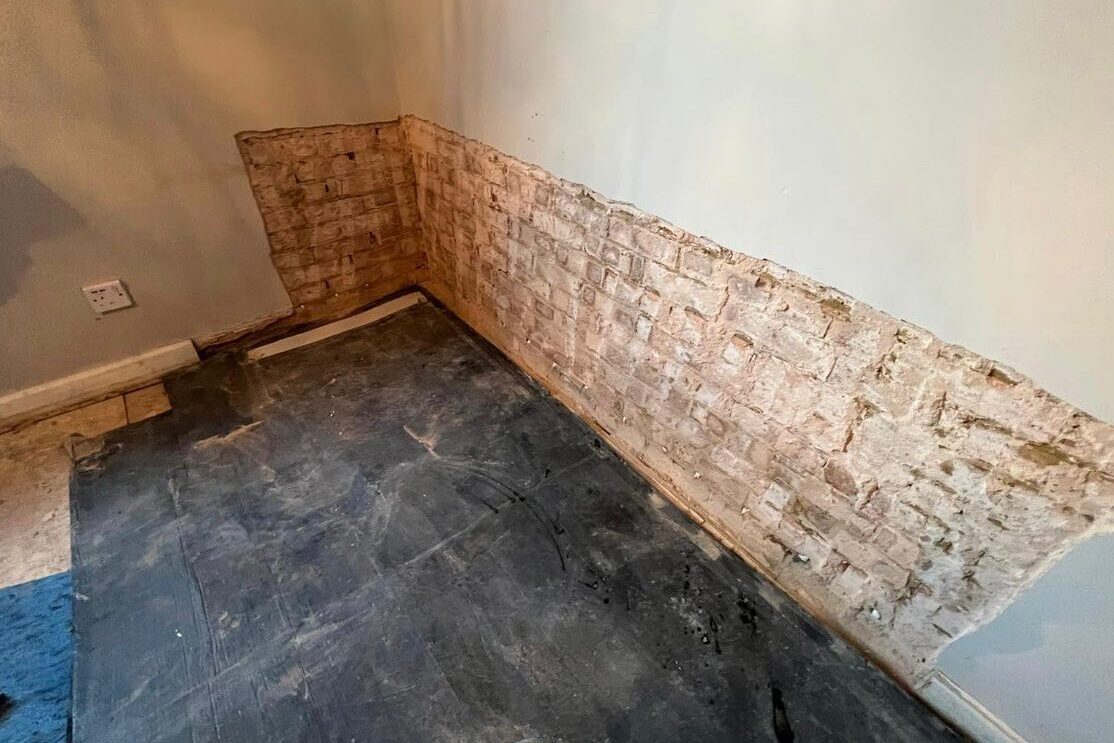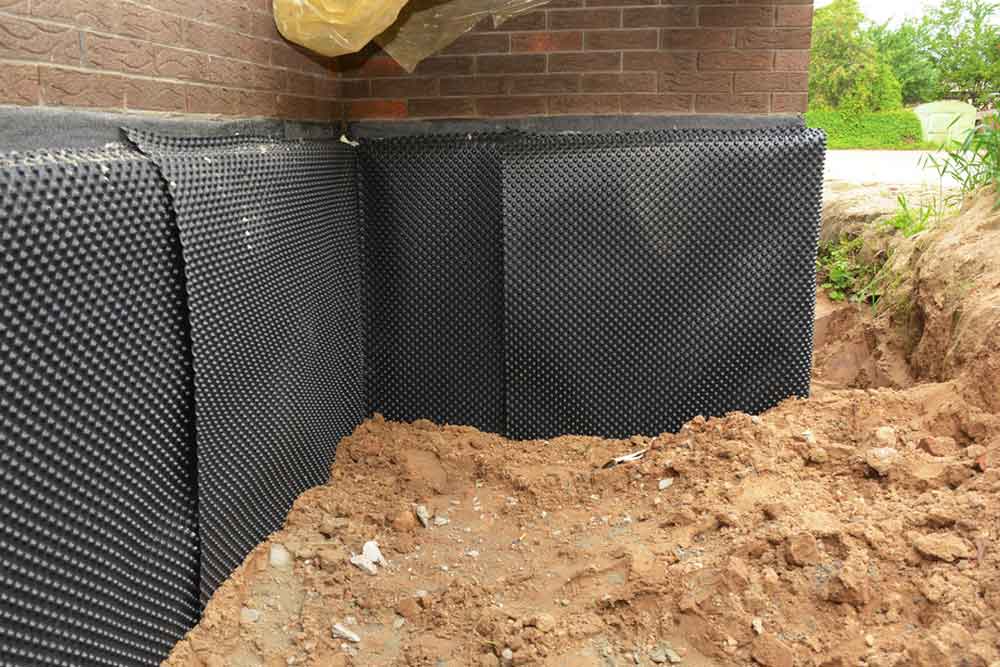Avoid costly repairs with proactive damp removal newcastle
Checking Out the Numerous Techniques and Solutions for Effective Damp Proofing
Dampness in structures presents substantial challenges to both structural stability and interior air quality. Different strategies and remedies have actually arised to battle this prevalent concern. From traditional damp-proof membranes to innovative chemical therapies, each approach offers distinct advantages. Comprehending these choices is crucial for effective moisture control. However, choosing the appropriate remedy relies on details structure problems and requirements, triggering further exploration right into the most efficient wet proofing methods available.
Comprehending the Causes of Dampness
Although dampness can arise from numerous resources, comprehending these causes is important for effective removal. Typically, dampness stems from 3 main resources: climbing moist, permeating damp, and condensation. Climbing moist happens when groundwater travels upwards through porous products, such as brick or rock, usually because of an absence of an effective barrier (damp removal newcastle). Penetrating moist is normally triggered by outside factors, consisting of roof leakages, malfunctioning gutters, or damaged wall surfaces, permitting water to infiltrate a residential or commercial property. Condensation, on the various other hand, arises from excess dampness in the air, usually intensified by inadequate air flow and temperature distinctions, bring about water droplets forming on surfaces. Determining these underlying issues is necessary, as each kind of dampness calls for a tailored strategy for remediation. Appropriate analysis helps in establishing the most efficient options, eventually safeguarding the architectural integrity of a building and improving indoor air top quality
Typical Damp-Proof Membrane Layers

Chemical Damp-Proofing Solutions
Chemical damp-proofing services provide an ingenious technique to stopping dampness breach in structures. These approaches commonly entail the application of fluid chemicals that pass through stonework and form an obstacle against increasing moist. Typically made use of chemicals include silanes, siloxanes, and other water-repellent agents that react with surface products to develop a hydrophobic layer.The application procedure generally calls for boring holes into the wall surfaces, infusing the chemical option, and permitting it to treat. This technique is specifically advantageous for older frameworks where standard damp-proof membranes may be impractical. Chemical damp-proofing can be much less disruptive and extra economical than comprehensive renovation projects.While efficient, these solutions depend on appropriate application and ecological conditions for peak efficiency. mould removal newcastle. Regular upkeep and tracking are important to assure the durability of the damp-proofing therapy. In general, chemical damp-proofing represents a functional alternative for safeguarding structures against moisture-related damages
Cavity Wall Surface Building And Construction Methods
Tooth cavity wall building and construction techniques supply various benefits, especially in dampness control and power effectiveness. By incorporating an air void between two layers of masonry, these walls properly mitigate water access while improving insulation. This combination not just protects frameworks from wetness but likewise contributes to lowered power intake.
Benefits of Tooth Cavity Wall Surfaces
When thinking about efficient moist proofing approaches, the advantages of tooth cavity wall surfaces stick out prominently. Tooth cavity wall surfaces include 2 separate layers, creating an air space that effectively lowers wetness infiltration. This style decreases the threat of dampness, as the outer wall works as a barrier against rainfall and water access. In addition, cavity walls enhance thermal insulation, which adds to energy performance by reducing warm loss. They also provide sound insulation, helping to create a quieter interior setting. Moreover, the air gap permits air flow, which assists in wetness control and minimizes the probability of mold and mildew growth. These benefits not just boost the general comfort of a structure yet likewise add to its durability and architectural stability.
Moisture Control Approaches
Reliable wetness control approaches are critical in tooth cavity wall surface building to assure long-lasting defense against moisture. One key approach involves the unification of weep openings, which help with water drain from the cavity, protecting against accumulation. Furthermore, using breathable membranes can help manage wetness levels while enabling caught vapor to run away. Proper positioning of insulation is also essential, as it ought to not obstruct drain courses. Making sure that the external leaves of the cavity wall are created with water-resistant products boosts total resilience. Routine upkeep checks are important to identify any obstructions or damages early, safeguarding the framework's integrity. Ultimately, a combination of these techniques develops a robust protection against dampness invasion in tooth cavity walls.
Insulation and Energy Efficiency
Insulation plays a vital function in improving energy effectiveness within dental caries wall surface construction. By integrating insulating products, these wall surfaces create a thermal barrier that lessens warm loss and decreases energy intake. Reliable insulation not just assists keep a secure interior temperature but also reduces the risk of dampness, as it stops condensation within the wall tooth cavity. Various strategies, such as using rigid foam boards or mineral woollen, can be utilized to achieve ideal insulation efficiency. Furthermore, correct setup is necessary to ensure that gaps and gaps are lessened, which can or else endanger energy effectiveness. Ultimately, a well-insulated dental caries wall adds significantly to total sustainability and reduces cooling and heating expenses for homeowners.
Exterior Damp Proofing Techniques
Exterior moist proofing approaches are vital for safeguarding frameworks from moisture infiltration. Two efficient strategies include the application of waterproof membranes and the installment of French drains. These options aid reduce water accumulation and protect the integrity of structures.
Waterproof Membrane Layer Application
While various methods exist for stopping moisture access, the application of water-proof membranes continues to be an extremely reliable outside wet proofing technique. These membrane layers are generally made from products such as polyethylene, rubber, or changed bitumen, giving a durable obstacle versus water penetration. The setup procedure involves applying the membrane to the check here outside surfaces of foundations or walls, ensuring total insurance coverage to stop leaks. Appropriate attachment and sealing at joints are crucial to making the most of efficiency. Water resistant membrane layers can be used in various forms, including liquid finishes and sheet membrane layers, allowing for adaptability based upon the details needs of the structure. This method not just shields buildings from wetness yet likewise boosts their longevity and structural honesty.
French Drain Installment
One efficient approach for taking care of groundwater and protecting against dampness buildup around a building's structure is the setup of a French drainpipe. This drainage system consists of a trench full of gravel and a perforated pipe that reroutes surface water far from the structure. Appropriate installation calls for mindful planning, guaranteeing that the drain inclines away from the framework to promote ideal water circulation. Furthermore, the location of the drainpipe is crucial; it must be positioned in areas vulnerable to merging or excess dampness. Regular upkeep, including clearing particles from the crushed rock and ensuring the pipeline stays unhampered, is crucial for long-lasting effectiveness. Inevitably, a well-installed French drain can substantially minimize the risk of water-related problems in foundations and basements.
Interior Waterproofing Approaches
Interior waterproofing approaches are crucial for safeguarding a structure's interior from wetness infiltration and prospective water damages. These approaches usually entail the application of specialized products and techniques created to develop a wetness obstacle within the structure. One typical strategy is making use of water resistant coatings or sealants on wall surfaces and floorings, which prevent wetness from passing through surfaces.Additionally, mounting indoor water drainage systems, such as sump pumps, can effectively take care of water accumulation in basements and crawl areas. An additional approach involves using vapor obstacles, which are installed to prevent wetness activity from the ground into living spaces.Moreover, resolving any fractures or voids in walls or foundations with ideal sealers assures a detailed defense against water breach. By executing these indoor waterproofing approaches, residential property proprietors can significantly minimize the threat of mold and mildew growth, structural damage, and other moisture-related problems. Proper execution of these methods is crucial for lasting defense and structure honesty.
Routine Maintenance and Evaluation Practices
Routine maintenance and inspection practices are important for guaranteeing the long-term efficiency of wet proofing solutions in any type of building. Routine checks allow homeowner to identify early signs of dampness invasion, such as peeling paint, mold and mildew growth, and musty smells. These indications can signify underlying concerns that require instant attention.Inspections should be carried out a minimum of annually, concentrating on at risk locations like cellars, crawl areas, and exterior wall surfaces. During these analyses, residential or commercial property proprietors must analyze sealers, drain systems, and air flow to confirm they function correctly.Additionally, keeping downspouts and gutters is crucial, as blocked systems can lead to water build-up near the structure. Carrying out a regular upkeep schedule, in addition to timely repairs, can substantially prolong the lifespan of wet proofing steps and protect the architectural stability of the structure. Positive actions inevitably contribute to the general health and wellness of the living setting.
Often Asked Inquiries
How Lengthy Does Damp Proofing Generally Last?
The period of wet proofing efficiency varies, generally lasting between 20 to half a century. Aspects such as application quality, environmental conditions, and maintenance techniques considerably affect the longevity of the moist proofing treatment.

Can I Damp Proof My Home Myself?
The specific contemplated the expediency of do it yourself damp proofing. With correct study and the best materials, it is possible. Nevertheless, they likewise recognized the relevance of professional advice to ensure durable efficiency and stop future issues.
What Are the Signs of Inefficient Damp Proofing?
Indicators of inadequate moist proofing consist of persistent stuffy odors, visible mold development, peeling paint, moist patches on wall surfaces, and wood degeneration - mould removal newcastle. Property owners need to attend to these issues without delay to stop more damage and wellness issues
Does Damp Proofing Affect Indoor Air Top Quality?

Just How Much Does Specialist Damp Proofing Expense?
Specialist wet proofing prices differ considerably, commonly ranging from $1,000 to $5,000 depending on the home's dimension, the extent of the wet problem, and picked approaches. Each situation needs a tailored assessment for accurate prices. Frequently, dampness stems from three main resources: climbing wet, penetrating damp, and condensation. When thinking about reliable wet proofing methods, the advantages of tooth cavity wall surfaces stand out plainly. External damp proofing techniques are crucial for protecting structures from moisture infiltration. While different techniques exist for stopping dampness access, the application of water-proof membranes remains an extremely reliable exterior wet proofing strategy. Indicators of inadequate damp proofing consist of relentless musty odors, visible mold development, peeling paint, damp patches on walls, and wood decay.